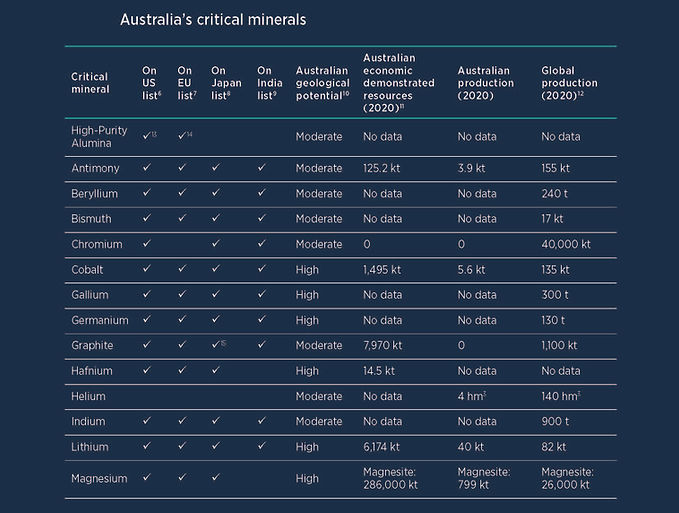CRITICAL MINERALS AROUND THE WORLD





WHAT YOU CAN EXPECT
The transition from fossil fuels to low-carbon energy sources will depend on critical minerals. The consumption of these minerals could increase sixfold by 2050, according to one scenario by the International Energy Agency. In that world, the trade in energy-related resources will consist largely of critical minerals rather than oil and natural gas. By value, this market could top $400 billion, exceeding the value of all the coal extracted in 2020.
To begin with, it is important to understand that two applications could drive three-fourths of the demand for critical minerals in 2050: electricity networks and batteries, chiefly for electric vehicles. Half of the total projected demand in 2050 is for copper and a quarter is split between nickel and graphite. Then come lithium, manganese, and cobalt. In terms of value, copper accounts for a third of the total in 2050, lithium and nickel each account for almost a quarter each, graphite 10 percent, and cobalt 7 percent.
Of course, these are just forecasts. But they reveal important trends and realities. Copper is by far the most valuable mineral. Copper, lithium, and nickel will account for over 80 percent of the market value in 2050. The production of each mineral is concentrated, but the major producers differ by commodity. The largest copper producer is Chile (40 percent of the total), Peru is second (11 percent), and China is third (9 percent). Australia produced half of the world’s lithium in 2020, Chile 22 percent, and China 17 percent. The top nickel producer is Indonesia (30 percent), followed by the Philippines (13 percent) and Russia (11 percent). Also on the list are countries such as Cuba (cobalt), Argentina and Brazil (lithium), and New Caledonia (nickel). This map is different than the impression one gets from headlines that overfocus on one or two countries and commodities.
This does not mean that other critical minerals—cobalt, manganese, graphite, or rare earths—are not important, only that context matters. Cobalt often dominates discussions about critical minerals, but in 2050, the value of cobalt could be lower than copper today and trivial relative to commodities like oil and gas today. Even the DRC earns more from copper exports today than from cobalt, despite being the world’s bigger cobalt producer. This is not a reason to ignore cobalt, but to ensure that conversations do not always devolve to cobalt and the DRC.

2023 FINAL CRITICAL MATERIALS LIST BY EUROPEAN COMMISSION (STRATEGIC RAW MATERIALS IN RED)
Aluminium /
Bauxite
Antimony
Arsenic
Baryte
Beryllium
Bismuth
Boron/Borate
Cobalt
Coking Coal
Feldspar
Fluorspar
Gallium
Germanium
Hafnium
Helium
Heavy Rare Earth Elements
Lithium
Light Rare Earth Elements
Magnesium
Manganese
Natural Graphite
Niobium
Platinum Group Metals
Phosphate Rock
Phosphorus
Scandium
Silicon Metal
Strontium
Tantalum
Titanium Metal
Tungsten
Vanadium
Copper*
Nickel*
* Copper and nickel do not meet the CRM thresholds, but are included as Strategic Raw Materials.
AUSTRALIAN CRITICAL MINERALS


